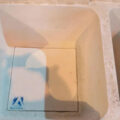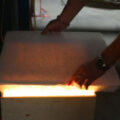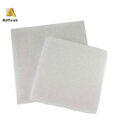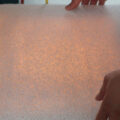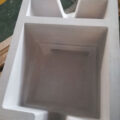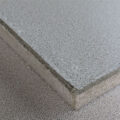The filtration efficiency of CFF has a great relationship with the number of pores/pore size and the size of insoluble inclusions. The reduction of the pore size improves the ability to “trap” small inclusions and increases the filtration efficiency. The filtration mechanism of CFF is a deep filtration mechanism. When aluminum melt passes through the filter plate, the insoluble inclusions are “trapped” in the tortuous channel of the filter plate due to friction, chemical adsorption, and physical adsorption. Deep filtration can “catch” inclusions smaller than its pore size. Under certain conditions of the flow rate of metal through the filter plate, its filtration efficiency mainly depends on the pore size and thickness of the filter medium.
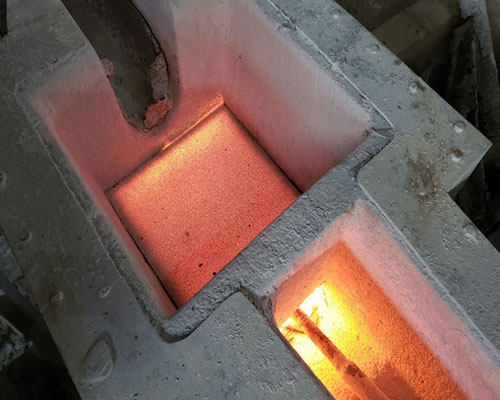
The unique three-dimensional open pore structure of ceramic foam, combined with the excellent properties of the ceramic itself, makes it show special advantages in molten metal filtration. The use of organic foam impregnation method to produce ceramic foam filter (CFF) for aluminum melt filtration has the advantages of simple process, convenient operation and low cost, and has broad development prospects. The main problems of CFF for aluminum are poor thermal strength and thermal shock resistance, and short service life. All of these restrict the improvement of the performance of aluminum alloy products, and they are also the hot spots of CFF research.
Foam ceramic has a wide range of raw materials, simple preparation, low cost, easy to recycle, and is an environmentally friendly green material with broad application prospects. Since the 1970s, foam ceramic preparation technology has been continuously improved. By selecting different materials and controlling the processing process, the shape, pore size, permeability, surface area and chemical properties of the ceramic foam can be appropriately adjusted to suit different purposes. In particular, the continuous emergence of various high-performance products has expanded its application fields to more than a dozen fields such as chemical engineering, environmental protection, energy, metallurgy, electronics, petroleum, textiles, food and medicine, aerospace, photoelectric sensing, and bioengineering. It is widely used to prepare filter separation elements, air distribution materials, catalysts, and bioceramics.
The primary feature and difficulty in preparation of foam ceramics is the formation of a porous network structure. According to the purpose of use and different requirements for material properties, people have developed a variety of advanced preparation techniques for foam ceramics.

